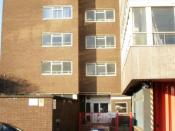Genetics, Brain Structure, and BehaviorImagine that you are driving along on the highway at the speed of 65 miles per hour and unexpectedly the speed increases to 95 miles per hour. Although you feel the urge to slow down and you are pressing the brakes, the car continues to accelerate. Or imagine the opposite: you are driving on a residential street, with a posted speed limit of 25 miles per hour but you are going 2 miles per hour. You are unable to speed up and creeping along, whilst others are whizzing by, bombarding you with dirty looks and gestures. This is a perfect analogy to bipolar disorder. Your brain's accelerator is jammed. When the brain is stuck in high gear it launches a manic episode but when the brain is stuck in low gear it launches a deep depression. The purpose of this paper is to examine and analyze the impact of deteriorating brain structures on behavior, focusing on bipolar disorder.
Bipolar disorder is classified as an affective disorder that is primarily characterized by patterns of abnormal and severe mood swings, ranging from disabling depression to delusional mania. The bipolar disorder spectrum consists of four different variations: Bipolar I, Bipolar II, Cyclothemic Disorder, and Bipolar Disorder NOS (not otherwise specified), which can be diagnosed based on the severity, presence or absence of psychosis, length of time between cycles, and whether the person is in a manic, mixed, depressive, or a symptom free state. According to the National Institute of Mental Health, 2.6% of Americans 18 and older have some form of bipolar disorder.
As the name bipolar disorder implies, it consists of two phases. According to WebMD, this duality describes the two phases or cycles of the disease the manic and depressive cycles. The individual suffering from this...


